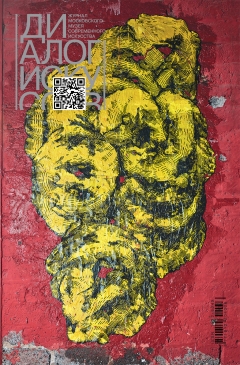Dmitri Kourliandski, a composer and participant in the Venice Biennale 2017, talked with media-artist and robotics engineer ::vtol:: also known as Dmitry Morozov about how an engineer is able to understand art and where the “new sound” is to be found.
|
|
Dmitri Kourliandski. The field of academic music is dominated by tradition; something new emerges as resistance to it. From the late 1960s composers have not only been producing formal and sonic structures but have also been inventing musical instruments, spaces and audiences. Is there a similar notion of tradition in your field? Do you observe any resistance to it?
Dmitry Morozov. I feel like in this field tradition consists of alteration. Technological art is built around the idea of DIY – do it yourself, reinvent the wheel at every opportunity, govern the evolutionary process – select what you consider worth selecting.
D. K. Do you work with sound or rather with the products of processing it?
D. M. As a sound artist I went beyond sound. Through sound I became interested in the machine that produces it and realized that there are many more things it can produce. Right now my hands are smeared with paint. Yesterday I presented a robot that turns music into mechanical abstract expressionism. Music here is the material that I use to feed the “Electro-Pollock” machine.
I also have social-oriented projects. “Antenna” is a police truncheon equipped with a GSM-module from a cell phone and a piezoelectric sensor which reacts to the sound of beating. Every time the truncheon is used to hit someone it sends a text message, “Mom, I hit a man,” to the policeman’s mother. It is a truly speculative-utopian device. The work has become known on the Internet. Although I have never myself been beaten by policemen, the Bolotnaya Square case ignited feelings of protest inside me and this is a way to express them through artistic media.
D.K. Since the 1950s, composers have been working towards overcoming the supremacy of instruments and the common notion of what music is. This involves escaping into other forms – from doing nothing to non-musical practices – and debunking the conventions imposed by historical context. Now you are doing the “Techne” project with ROSIZO-NCCA which is dedicated to new technologies and art practices. In Russia public institutions are not used to working with technological art on a long-term basis.
D.M. Institutions are mostly afraid of working with technological art. There is a risk of slipping into design or presenting a technology as a piece of art in its own right.
There used to be Termen Center; it became the epitome of self-organization largely thanks to Andrey Smirnov. It was not composers but people oriented towards interdisciplinary practices, connected with not only music but, for example, kinetics, who constituted the greater part of the community that formed there. A whole generation of multimedia artists would not have emerged if this center had not existed. Now Smirnov has moved his collection to the Ground Center, which cannot fulfil this role in the same way. The education course held there is frequented by people of different specialities – from academic artists to sound designers of video-games. They understand that here is where experiments take place and one day these experiments may become the mainstream.
D.K. How rapidly does technological art become obsolete?
D.M. To produce a high-quality work of art one should be at the same time an engineer, a composer, a programmer as well as able to write texts. This is no easy task to accomplish. I practically never manage to make a piece that isn’t flawed in some way. We invest money and time into something that is not pragmatic. For engineers, the fundamental rule is to produce something useful, efficient and sustainable. However art has other goals. I feel guilty for wasting resources on such eccentric pursuits.
DI#1-2018




